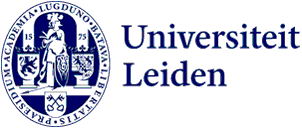
Why biologist Rafael Martig became an artist: ‘Art opens people’s eyes’
In his art, Rafael Martig shows how drastically human activity changes nature. Fieldwork during his studies reinforced this view. ‘On Ameland I found masses of meadow birds, but the greenery on the mainland was often a grass desert.
For the past few months there has been an intriguing metres-high artwork on the site of Leiden University of Applied Sciences, in the form of a giant tulip bulb. ‘It’s very odd,’ says Rafael Martig (32). ‘For years I cycled along here through the Leiden Bio Science Park on my way to lectures. Now, along the very same route there’s my own artwork!’
Bulb of diversity
The painted bulb shows life in Leiden and the bulb-growing area, above and below the ground. It features iconic Leiden buildings, part of the Hortus botanicus and bulb cultivation. Below the surface you can see the different animals, fungi and bacteria that can be found here. ‘The soil samples from researchers show that soil life is much less diverse where there is regular bulb cultivation.’
-

Rafael Martig. -

Community Art
Martig painted the bulb on three locations: Leiden’s Kooi neighbourhood, Leiden University of Applied Sciences and the Hortus botanicus. Students and other visitors put forward suggestions for what should be included. The mole cricket, for example, a large insect that is a plague for gardens because it bites through roots. Martig went on a ditch safari with a school class and the day’s haul – a lot of damselflies and frogs – were given a place on the bulb. There are also painted snails. ‘They represent the research by biologist Menno Schilthuizen, who discovered that the shells of snails in towns are often lighter in colour as a strategy for absorbing more heat.’
Out in the open air
A little further along in Naturalis Biodiversity Centre, Martig talks about how having studied Biology influences his art. He grew up in Arnhem and often wandered on the heath and along the river. ‘Biology was the obvious choice for me. After the first year, I specialised in ecology and behavioural biology because I wanted to be out in the open air as much as possible.’ Man’s influence on nature quickly became a key theme. ‘That also came from fieldwork in South Limburg, for example. I could see that there was still a lot more diversity of insects and plants there. That’s partly because of the calcium-rich soil, but also because large areas of the Netherlands suffer greater effects from nitrogen and artificial fertilisers.’
Masses of meadow birds
That perception took stronger root during a graduation project on Ameland, where he ringed birds. ‘I found masses of meadow birds including godwits, lapwings, oystercatchers and redshanks. But on the way to Ameland a lot of greenery has become a kind of grass desert because of the effects of agriculture. It’s remarkable how quickly the situation has deteriorated.’
-

Martig did research on meadow birds for two years on Ameland. -

Part of a series of paintings about meadow birds and making them into official portraits.
Choosing art
After graduating, Martig did research on meadow birds for two years on Ameland, before finally choosing art. ‘I began to ask myself: what am I contributing? We’ve known for seventy years that things are getting worse with nature, but nothing changes. My research will become a PDF read by people who already know things are going downhill. Obviously, this kind of research has to carry on, but I’d rather share insights with a broader public. With art, you can tell your stories
Official portraits
How did he switch from being a biologist to art? ‘My parents are both violin makers, so there was always a workplace at home where I could tinker around, paint and draw. And, as part of my studies, I took photography at the Art Academy in The Hague, where I learned how to tell stories visually.’ Through his work on Ameland, Martig had the idea of creating a series of paintings about meadow birds and making them into official portraits. ‘To show that we had a golden age of meadow birds, but that they are now disappearing.’ That series was to become his first exhibition in the Natural History Museum in Rotterdam. For every artwork sold, 500 euros went to Birdlife International. ‘I don’t just want to raise awareness; I also want to encourage people to take action.’
